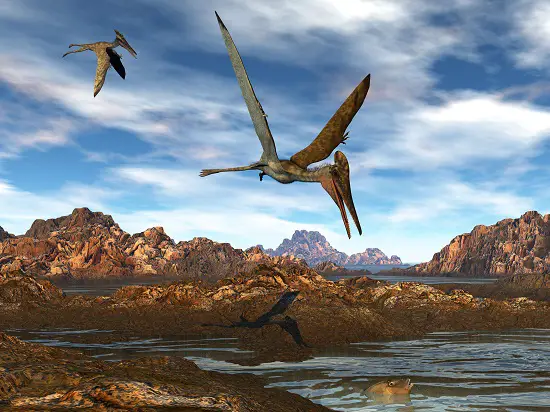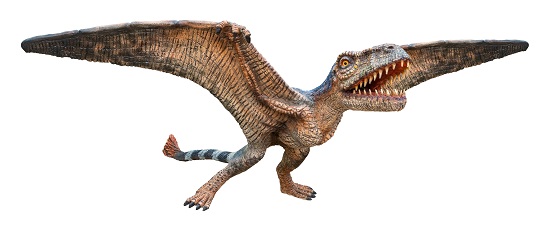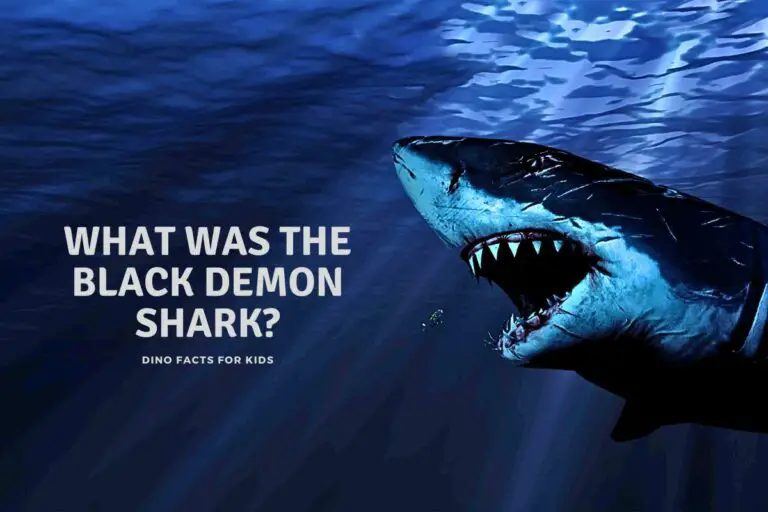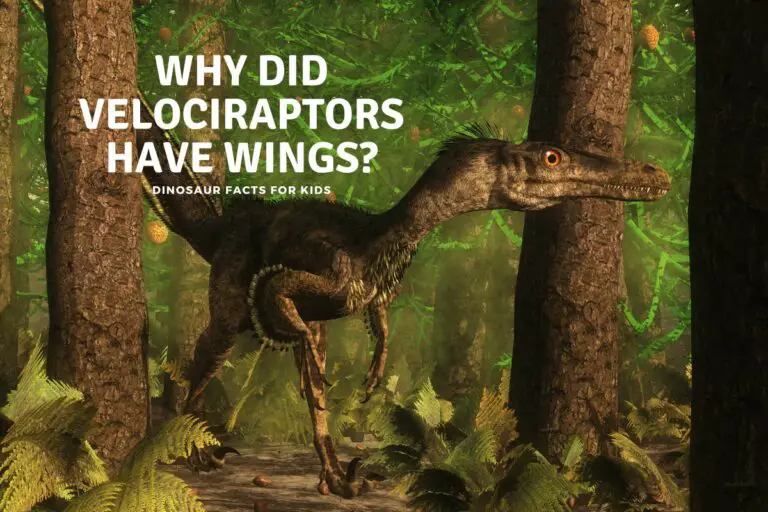Did Pterodactyls Have Teeth?
Did Pterodactyls Have Teeth?
Although dinosaurs were the dominant life forms on the plant for millions of years – from 240 to 66 million years ago, they were not the only one. mammals, fish, turtles, reptiles all lived along side them and some very successfully. Pterodactyls were one such flying reptile who soared the sky’s when Allosaurus roamed the ground. Allosaurus may be more famous for its teeth, but we take a look if Pterodactyls had teeth in the article below.
Pterodactyls had up to 90 teeth according to fossil evidence. These teeth were thin and cone shaped more suitable for grabbing and holding rather cutting and slicing and would have been suitable to grab and hold their main food source – fish.
Pterodactyl was not a dinosaur, this flying reptile – whose name is commonly used to describe all flying reptiles – belong to a larger group of flying reptiles called Pterosauria and pterodactyl was actually one of the smaller members of the group. Although pterodactyl id actually have teeth there were plenty of pterosaurs who did not.
We will take a look at those with teeth and those without and offer some reasons why this is the case below.

What was a Pterodactyl
Pterodactylus was a flying reptile that belonged to the pterosaur family. it was small in size, with a wingspan of about 3-4 feet (1 metre) and would have stood only about 1 foot tall (30cm) when on the ground. it would have eaten insects, especially when a juveniles and as it lived close to shore lines would have eaten lizards, fish and other small animals. It lived about 150 million years ago and its fossils have been found mostly in Germany.
As we mentioned above its name has become the common term for all pterosaurs, and is also often mistaken for the Pteranodon which was a much larger pterosaur ( up to a 23 feet wing span!) that, unlike the Pterodactylus, did not possess teeth and lived around 84 million years ago.
you can check out more about the size of Pterodactyl here on the site – although we cover the whole range of sizes not just the pterodactyl!

Did Pterodactyls have teeth
If we are taling about the the actual pterdactyl, or more accuratly the Pterodactylus then Yes, the actual pterodactyl, teeth. Pterodactylus was a member of the Pterodactyloidea group, which were more advanced pterosaurs with specific characteristics like reduced tails and elongated fourth fingers.
Pterodactylus had numerous, around 90, small, sharp teeth in its jaws, which were well-suited for catching fish and other small, often soft bodied it is thought, prey.
However, if we are talking about pterodactyl as all pterosaurs then not all pterosaur species had teeth, and in fact, even those that did their teeth varied greatly in size, shape, and arrangement.
Pterodactylus, had numerous small, sharp teeth perfect for snatching up fish and other small prey. Dimorphodon, another toothed pterodactyl, possessed an unusual tooth arrangement with two types of teeth, including 5 or so sharp fangs at the front and 30 plus blunt teeth at the back.
Other species had different teeth to suit their diets and lifestyles. For example, some pterosaurs had long, curved teeth ideal for grabbing slippery prey, while others had shorter, more robust teeth designed for crushing hard-shelled creatures like mollusks.
Pterosaurs with teeth
We have included some information about some of the more toothy pterodactyls ( pterosaurs) in the list and table below. We have already covered the Pterodactylus teeth so lets look at the others.
- Rhamphorhynchus: Sporting a mouth full of needle-like teeth that interlocked when closed, Rhamphorhynchus was an expert fisher. Its long, curved teeth were perfect for catching slippery fish and other aquatic prey, ensuring a stable food supply.
- Eudimorphodon: Eudimorphodon had a unique combination of teeth, with sharp fangs at the front and blunt teeth at the back over 100 in a small 6 cm head!. This allowed it to catch and process a variety of food items, making it a versatile predator.
- Dorygnathus: Equipped with long, slender teeth that angled forward, Dorygnathus was well-adapted to snatch fish from the water. Its teeth were also useful for trapping insects in mid-flight.
- Sordes: This small pterodactyl featured sharp, pointy teeth that were ideal for grabbing insects and other small prey and then again some back teeth to chew or mash up those harder to eat prey items.
- Ornithocheirus: With its large size and an impressive array of teeth, Ornithocheirus was likely a formidable predator. It had vertical teeth.
- Dimorphodon. It was characterized by teeth, which included two types — hence the name “Dimorphodon,” meaning “two-form tooth.” This early pterosaur had large, fang-like teeth at the front of its jaws, which were useful for catching and holding onto prey. Additionally, it had smaller, more closely-packed teeth at the back of its jaws. We actually nickname it the flying T-rex or the T-Rex with Wings and the picture above the table shows why.

| Name of Pterosaur | Short Description | Evidence of Teeth | When it Lived (MYA) |
|---|---|---|---|
| Pterodactylus | Small Jurassic pterosaur with cone shaped narrow teeth. | Fossils discovered in Germany indicated 90 teeth in adults. | |
| Rhamphorhynchus | Early pterosaur with a long tail and needle-like teeth | Fossil evidence shows long, interlocking, needle-like teeth | 161-145 |
| Eudimorphodon | Small pterosaur with unique dental arrangement | Fossils reveal sharp fangs at front and blunt teeth at back | 221-210 |
| Dorygnathus | Medium-sized pterosaur with long, slender, forward-angled teeth | Fossil evidence of those scary jutting out teeth | 183-176 |
| Sordes | Small pterosaur with sharp, pointy teeth for catching insects | Fossils show sharp, pointy teeth ideal for catching insects | 160-155 |
| Ornithocheirus | Large pterosaur with conical teeth for capturing fish | Fossils reveal robust, conical teeth in its jaws | 125-100 |
| Dimorphodon | Early pterosaur with distinct two-form dentition | Fossils show large, fang-like teeth at front and smaller teeth at back | 200-190 |
Pterosaurs without teeth
While some pterodactyl species had teeth, there were also many toothless pterosaurs that developed different types of mouths or beaks. We take a look at five examples of toothless pterodactyls and their adaptations in the section and table below.
- Pteranodon: With a wingspan reaching up to 23 feet, Pteranodon was a large pterodactyl that used its toothless, sharp-edged beak to catch and eat fish.
- Quetzalcoatlus: As one of the largest known flying animals, Quetzalcoatlus belonged to the Azhdarchid family of toothless pterosaurs. Its long neck and huge beak allowed it to search for food both on land and in the water, possibly feeding on small vertebrates and carrion.
- Nyctosaurus: Another toothless pterodactyl, Nyctosaurus had a unique, antler-like crest on its head. Its beak was well-suited for catching fish
- Tapejara: With a distinct, large cranial crest and toothless beak, Tapejara is believed to have been a fruit-eating pterosaur. The shape of its beak was similar, ish, to a parrots
- Thalassodromeus: Known for its striking, sail-like head crest, Thalassodromeus was another toothless pterosaur. Its beak was adapted for capturing and consuming fish, squid, and other marine life in the shallow coastal waters where it lived.
| Name of Pterosaur | Short Description | Evidence of Toothlessness | When it Lived (MYA) |
|---|---|---|---|
| Pteranodon | Large pterosaur with toothless, sharp-edged beak for catching fish | Fossil evidence of a toothless, sharp-edged beak | 86-84.5 |
| Quetzalcoatlus | One of the largest flying animals, toothless with a long neck and formidable beak | Fossil evidence shows a toothless beak and long neck | 68-66 |
| Nyctosaurus | Toothless pterosaur with unique, antler-like crest on its head | Fossil evidence of a toothless beak ideal for catching fish | 85-84 |
| Tapejara | Toothless pterosaur with a large cranial crest, likely fruit-eating | Fossil evidence shows a toothless parrot like beak | 112-94.3 |
| Thalassodromeus | large Toothless pterosaur with a striking, sail-like head crest | Fossil evidence of a toothless beak adapted for capturing marine life | 100 |
Different types of Pterodactyl
As we mentioned twice (its important) above, Pterodactyl has become the general term for all pterosaurs, so here we will look at the different types of Pterosaurs – of which Pterodactyls was just one and then explain which were likely to have teeth and which were not.
Pterosaurs were an amazingly diverse group of flying reptiles, with over 150 known species ranging from the size of a sparrow to the wingspan of a small airplane (Quetzalcoatlus if you are wondering, it makes a brief appearance in Jurassic World Dominion) .
Understanding how different this group were helps to understand why some pterosaurs had teeth and others rather than evolve into them evolved out of them.
Pterosaurs can be divided into two main groups:
- Rhamphorhynchoids, which were the early pterosaurs, and
- Pterodactyloids, the more advanced group that includes the famous pterodactyls. These two groups had various adaptations
The presence or absence of teeth in different species can give us clues about their diets, feeding habits, and how they interacted with other species in their environment.

Why were there Toothed and Toothless Pterosaurs?
As you can see there is a mix of both toothed and toothless pterosaurs, and the reasons can be put down to diet. As you can see that the majority of the toothed pterosaurs are older than the toothless ones.
One possible theory is that pterosaurs had to evolve due to increasing competition, possibly from birds. a recent research project on how to assess what pterosaurs ate by wear on their teeth address why teeth seemed to be only found in earlier pterosaurs.
They found that it may have been to competition with birds becoming more widespread and eating insects. however they did state they hadn’t fully investigated this.
I want to stress that we haven’t tested to see whether or not this dietary shift was because of birds,” says Bestwick. “But we did notice that the timeframe—it’s a little bit more than a coincidence, at the moment
Jordon Bestwick
So while there is a definite correlation between the increase in bird life and the shift from toothed pterosaurs and toothless pterosaurs, there are several other potential factors, including evolutionary adaptations, feeding habits, and ecological pressures.
Evolutionary pressures as well competition also likely played a role in the development of teeth. As pterosaurs diversified and occupied different ecological niches, the presence or absence of teeth could have helped in reducing competition among species for food resources,
By specializing in different food sources and feeding strategies, toothed and toothless pterosaurs could coexist and avoid direct competition for the same resources.
Species with teeth were often specialized for capturing and processing certain types of prey. For example, pterosaurs with long, sharp teeth were well-suited for catching fish, while those with more robust teeth could crush the shells of mollusks or other hard-shelled invertebrates.
In contrast, toothless pterosaurs developed different strategies for acquiring and processing food. Some had beaks adapted for plucking fruit or foraging in soft sediment, while others were specialized for skimming the water’s surface to catch fish and other aquatic prey.
Toothless pterosaurs might also have had an easier time maintaining their beaks, as teeth require more energy and resources to grow and repair.
Conclusion
So the answer to the original question Did a Pterodactyl have teeth is yes they did, 90 small cone shaped narrow teeth in their beaks / mouth.
However as the term pterodactyl actually in general language can mean both the whole range of Pterosaur species, or the much larger Pteranodon the answer becomes more complicated.
If we are talking about Pteranodon then it did not have teeth, and likely evolved over million of years to become a piscivore possibly like other toothless Pterosaurs, probably in no small due to competition from birds.
and finally if we are using Pterodactyl as a generic term for all pterosaurs then the answer is that some did have teeth, mainly earlier pterosaurs, and some didn’t, mainly the later pterosaurs.
So there you go a Yes, No and Maybe answer! nothing is ever that simple is it!
References
- https://adventuredinosaurs.com/2022/02/02/does-a-pterodactyl-have-teeth/
- https://www.nature.com/articles/s41467-020-19022-2
- https://www.wired.com/story/what-did-pterosaurs-eat-look-closely-at-their-teeth/
- https://www.discovermagazine.com/the-sciences/this-pterosaur-had-at-least-480-hooked-teeth
- https://phys.org/news/2023-01-pterosaur-species-hundreds-tiny-teeth.html
Hi, I am Roy Ford a General Studies and English Teacher who has taught all over the world. What started as a fossil collection became a great way to teach, motivate and inspire students of all ages and all over the world about dinosaurs and from that and children’s love of dinosaurs came the site dinosaur facts for kids, a resource for all ages.







